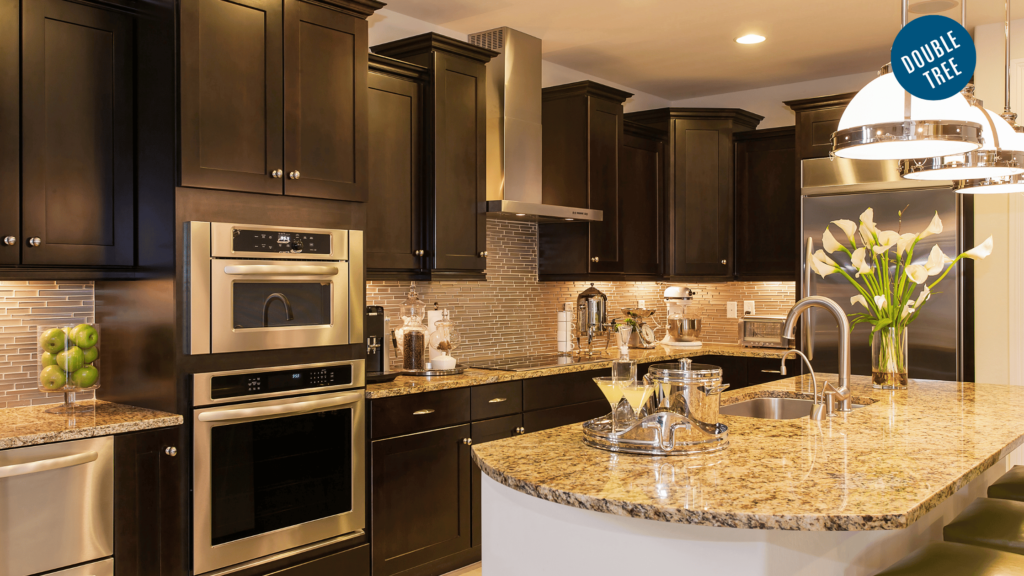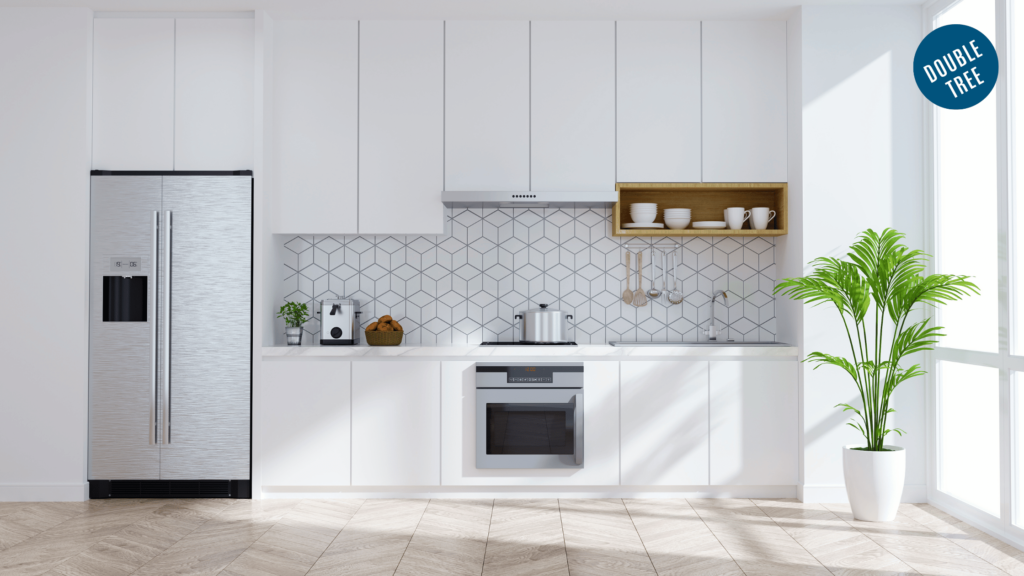Modular kitchens have changed the design landscape, offering flexibility, efficiency, and style. However, even the most well-planned modular kitchen can only fail without proper lighting.
Effective lighting design is crucial for your culinary space’s functionality and aesthetics. It improves the overall ambience, enhances task performance, and showcases the beauty of your modular kitchen components.
This article will explore ten essential lighting design tips tailored to modular kitchens. These insights will help you create a well-lit, inviting space perfect for cooking, entertaining, and everyday living.
Kitchen Lighting Layers
Before diving into specific tips, it’s important to understand the three main layers of kitchen lighting:
- Ambient lighting: This provides overall illumination and sets the general mood of the space.
- Task lighting: Focused lighting that helps you perform specific tasks like chopping vegetables or reading recipes.
- Accent lighting: Decorative lighting that highlights particular features or creates visual interest.
A well-designed modular kitchen incorporates all three layers to create a balanced and functional lighting scheme.
Tip 1: Plan Your Lighting Early
Early planning is one of the most crucial aspects of successful kitchen lighting design. Integrating lighting into your modular kitchen design from the outset ensures a cohesive and efficient result.
Coordinate with your kitchen designer and electrician during the initial planning stages. Consider the placement of cabinets, appliances, and work areas to determine optimal lighting positions. Plan for adequate electrical outlets and switches to support your lighting scheme.
By addressing lighting early in the design process, you can avoid costly modifications later and ensure that your modular kitchen is beautiful and functional.

Tip 2: Utilize Under-Cabinet Lighting
Under-cabinet lighting is invaluable for modular kitchens, providing essential task lighting for countertop work areas. It eliminates shadows on work surfaces, improves food preparation and cooking visibility, and adds a warm, inviting glow to the kitchen.
Popular under-cabinet lighting options include:
- LED strip lights
- Puck lights
- Linear LED fixtures
When installing under-cabinet lighting, ensure the fixtures are positioned towards the front of the cabinet to maximize illumination on the work surface.
This placement also helps to conceal the light source, creating a sleek, integrated look that complements your modular kitchen design.
Tip 3: Incorporate Pendant Lights
Pendant lights serve as both functional and decorative elements in modular kitchens. They’re particularly effective over islands, dining areas, or peninsulas. When choosing pendant lights, consider the size of your space – larger kitchens can accommodate bigger or multiple pendants.
Match the style to your modular kitchen design (e.g., modern, traditional, industrial). Ensure the bottom of the pendant hangs 30-36 inches above the surface for optimal lighting and clearance.
Pendant lights can become a focal point in your modular kitchen, adding personality and style while providing targeted illumination for specific areas.
Tip 4: Install Recessed Lighting
Recessed lighting, also known as can or downlights, is an excellent choice for ambient lighting in modular kitchens. It provides even, glare-free illumination, doesn’t interfere with cabinet placement or overhead storage, and creates a clean, streamlined look that complements the modular design.
Consider a grid pattern that ensures even coverage throughout the kitchen when planning recessed lighting. Please pay special attention to work areas, ensuring they receive adequate illumination from overhead.

Tip 5: Consider Dimmable Options
Incorporating dimmable lighting in your modular kitchen offers flexibility and energy savings. It allows you to adjust the lighting to different times of day and activities, creates ambience for dining or entertaining, and reduces energy consumption when full brightness isn’t needed.
Consider installing dimmer switches for:
- Overhead lights
- Pendants
- Under-cabinet lighting
This allows you to fine-tune the lighting to suit your needs and mood.
Tip 6: Don’t Forget Natural Light
While artificial lighting is crucial, natural light plays a significant role in kitchen ambience and functionality. If possible, position the kitchen near windows during the modular kitchen planning phase. Use light-reflecting surfaces like glossy cabinet finishes or backsplashes.
Consider skylights or solar tubes for kitchens with limited window access. Balancing natural and artificial light creates a dynamic, inviting space that changes throughout the day.
Tip 7: Use Statement Lighting Fixtures
A well-chosen statement light fixture can transform your modular kitchen from functional to fabulous. Select a fixture that complements your kitchen’s style and colour scheme.
Consider the scale—ensure the fixture is proportionate to your space. Look for unique designs or materials that reflect your taste.
Statement lighting is popular in several locations, including over a kitchen island, in a breakfast nook, or as a central ceiling fixture in smaller kitchens.

Tip 8: Illuminate Inside Cabinets
Internal cabinet lighting is an often-overlooked aspect of kitchen lighting design that can significantly improve functionality and aesthetics. It enhances visibility in storage areas, highlights decorative items in glass-front cabinets, and adds depth and interest to the kitchen design.
Options for cabinet lighting include:
- LED strip lights
- Small puck lights
- Integrated lighting solutions (offered by many modular kitchen systems)
Tip 9: Consider Color Temperature
The colour temperature of your lighting can dramatically affect the look and feel of your modular kitchen. Warm light (2700K-3000K) creates a cosy, inviting atmosphere. Cool light (3500K-4100K) provides a clean, energizing effect. Daylight (5000K-6500K) offers the best colour rendering, ideal for task areas.
Mix different colour temperatures to create a layered lighting scheme. For example, use cooler lights for task areas and warmer lights for ambient illumination.
Tip 10: Layer Your Lighting
The key to a well-lit modular kitchen is layering different types of lighting to create depth, functionality, and atmosphere. Combine ambient, task, and accent lighting. Use a mix of fixture types (e.g., recessed, pendants, under-cabinet). Incorporate lighting at different heights to create visual interest.
By thoughtfully layering your lighting, you can create a modular kitchen that’s both highly functional and visually appealing.

Conclusion
Effective lighting design is essential for bringing out the best in your modular kitchen. By incorporating these ten lighting design tips, you can create a space that’s practical for cooking and food preparation and inviting for family gatherings and entertaining.
Remember to plan your lighting early, utilize a mix of lighting types, and consider both function and aesthetics. With careful consideration and creative implementation, your modular kitchen will shine as the heart of your home.
Whether renovating an existing kitchen or planning a new modular installation, these lighting design tips will help you achieve a beautifully illuminated culinary space that meets all your needs and reflects your style.





